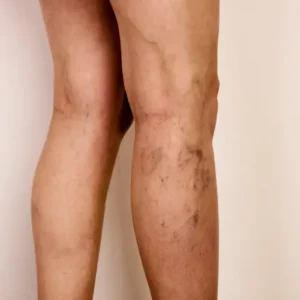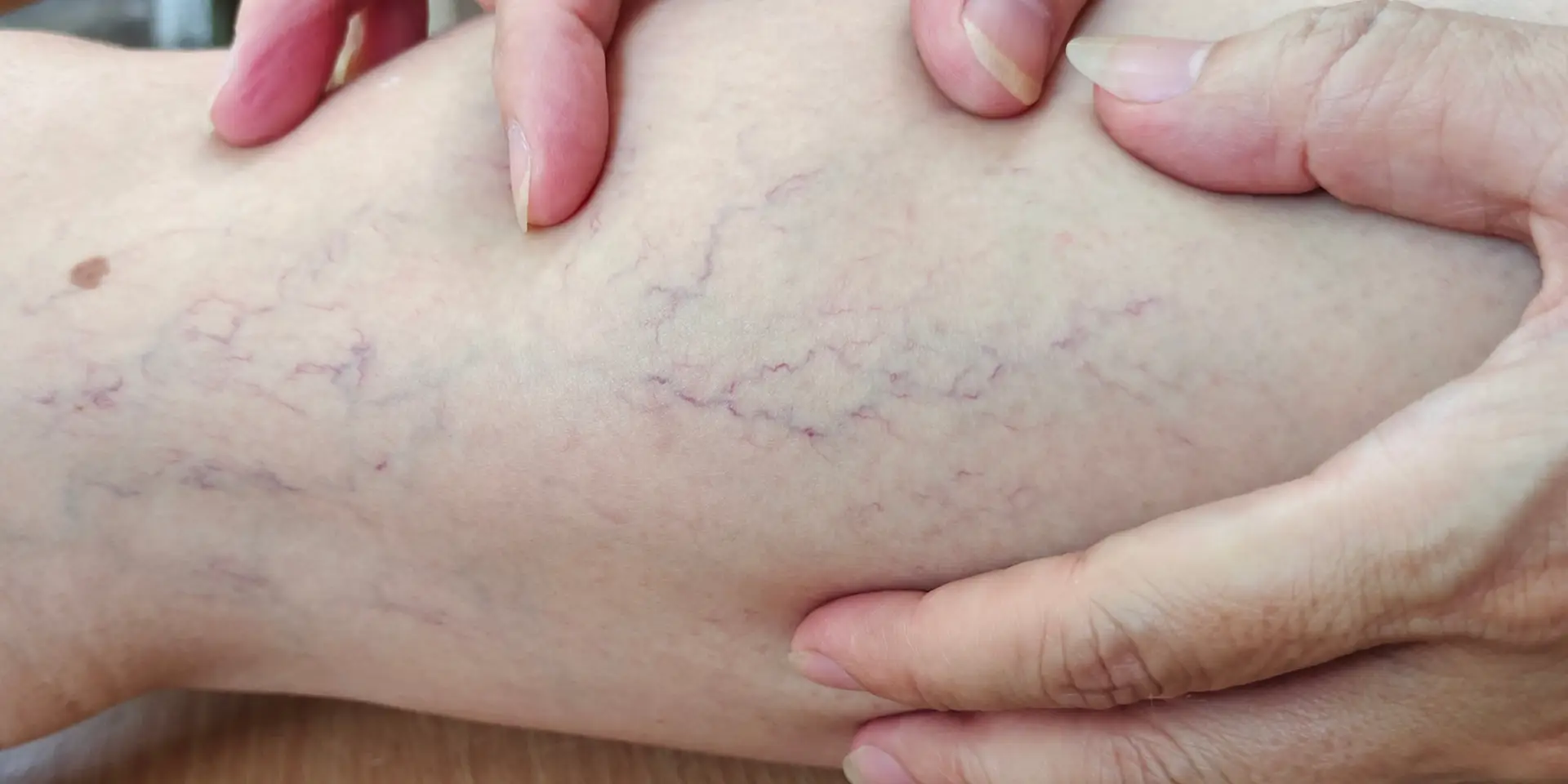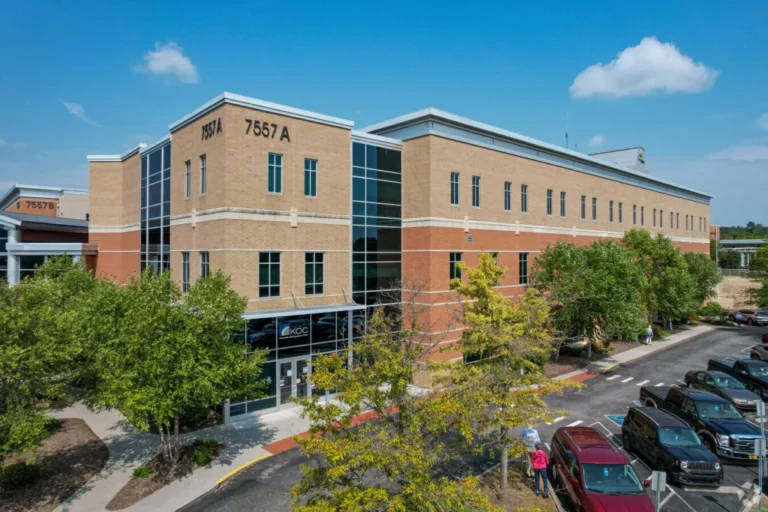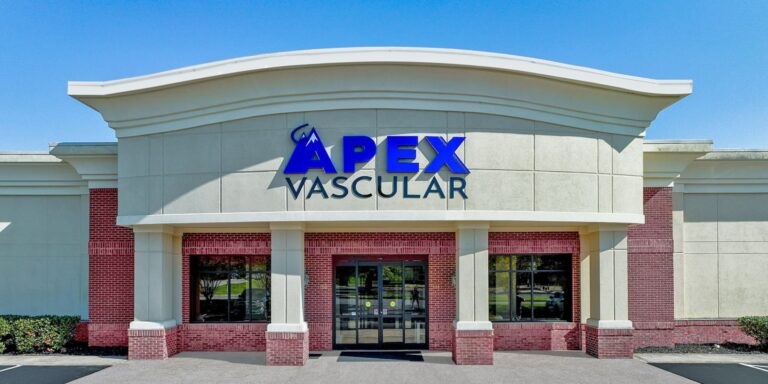You may have noticed that veins often show through the skin, usually appearing blue or green. But what do purple veins mean? They can indicate different vascular conditions, so it’s important to understand their significance for your overall health. Seeking medical attention can help prevent complications and allow you to take charge of your vascular health.
Skin tone, age, health conditions, and lifestyle influence vein colors. However, purple veins may indicate venous insufficiency, manifesting as varicose or spider veins. Risk factors include genetics, age, and lifestyle choices. Treatment options range from minimally invasive procedures to surgery, with prevention focusing on healthy habits and compression socks. For high-quality treatment, choose APEX Vascular.
Why Are Veins Different Colors?
Veins appear in different colors due to a combination of factors. The primary reason is how light interacts with the skin and blood vessels. Before we dive into purple veins, we need to understand the appearance of normal, healthy veins. Blue and green veins are an optical illusion caused by light absorption and reflection. Skin tone plays a role, with lighter skin making veins more visible. Age also affects vein visibility, as thinner skin reveals more.
Underlying health conditions can cause vein discoloration. Additionally, factors like sun exposure, tight clothing, and prolonged standing can temporarily increase vein visibility. Genetics and hormonal changes may also influence vein appearance.
What Do Purple Veins Mean?
Normally, veins appear blue or green due to how light interacts with the skin and blood vessels. However, when veins take on a purple hue, it may indicate more serious conditions. So what do purple veins mean, exactly?

The purple appearance of veins can be caused by several factors. One common cause is venous insufficiency, where damaged valves in the veins allow blood to pool and create pressure. This can lead to the veins becoming enlarged, twisted, and taking on a darker purple color. Age also plays a role, as thinning skin can make veins more visible and appear darker.
While not all purple veins are dangerous, they can be a sign of underlying vascular problems. If you notice changes in vein color, especially when accompanied by symptoms like pain, swelling, or discomfort, it’s advisable to consult a vein specialist for proper evaluation and treatment.
Types of purple veins
Purple veins can manifest in several forms, each with distinct characteristics. Varicose veins are enlarged, swollen blood vessels that appear twisted and bulging under the skin due to the valves inside the veins becoming weak or damaged. This causes blood to pool and create pressure. They are typically blue or dark purple and are most commonly found on the legs.
Varicose veins can cause symptoms in the legs such as:
- Aching
- Heaviness
- Discomfort
Spider veins, also known as telangiectasias, are smaller than varicose veins and appear as thin, web-like patterns on the skin’s surface. They can be red, blue, or purple and are often found on the legs, face, and other areas of the body. Spider veins are usually painless but may cause itching or burning sensations in some cases.
Purpura, while not a vein type per se, refers to purple-colored spots on the skin caused by bleeding underneath the skin’s surface. Unlike varicose or spider veins, purpura is not related to vein dilation but rather to blood leaking from capillaries. Purpura can appear as small dots or larger patches and may be associated with various medical conditions or injuries.
Risk Factors
Purple veins are influenced by various risk factors, with genetics playing a significant role. For example, you have a much higher chance of developing varicose veins if one of your parents had them. Age is another key factor, as the risk increases after the age of 50.
Lifestyle factors are another substantial contributor, including:
- Obesity
- Prolonged standing or sitting
- Inactivity
- Smoking
Medical conditions such as pregnancy, hormonal changes, and chronic venous insufficiency can also increase the risk of purple veins. Additionally, certain genetic disorders like Klippel-Trenaunay syndrome and Ehlers-Danlos syndrome are associated with an increased prevalence of varicose veins.
Symptoms and Complications
Common symptoms associated with purple veins include aching, heaviness, cramping, and discomfort in the legs, especially after prolonged standing or sitting. You may also experience swelling, itching, and a feeling of restlessness in your legs.

If left untreated, purple veins can lead to serious complications. This includes deep vein thrombosis (DVT), where blood clots form in deep veins, potentially leading to life-threatening pulmonary embolisms. Untreated varicose veins may also result in skin changes like hyperpigmentation, dermatitis, and, in severe cases, venous ulcers that are difficult to heal.
Diagnosis and Treatment Options
The diagnosis of varicose veins typically begins with a medical evaluation, including a physical examination and review of medical history. Vein screenings are crucial for assessing blood flow and vein structure. These screenings can detect issues like venous insufficiency and guide your treatment plan to healthy veins and legs.
Treatment options for purple veins include:
- Sclerotherapy: Injection of a solution to scar and close smaller veins
- Endovenous thermal ablation: Uses heat in the form of lasers or radiofrequency to seal off larger veins
- Endovenous adhesive ablation: Employs medical adhesives to close unwanted veins
- Endovenous mechanochemical ablation: Combines mechanical treatment with a sclerosing agent
- Ambulatory phlebectomy: Surgical removal of surface veins through tiny incisions
The choice of treatment depends on the size and location of the veins, as well as your overall health. These procedures are typically minimally invasive and can often be performed in our vascular outpatient center. When you meet with one of our vein specialists at APEX, they will recommend a unique treatment plan for your vein condition based on your own particular needs.
Prevention and Management
Several lifestyle changes and self-care techniques are effective for the prevention and management of purple veins. Regular exercise, maintaining a healthy weight, and avoiding prolonged sitting or standing can improve circulation.
You can also:
- Wear compression stockings
- Elevating legs when resting
- Reduce salt intake
A balanced diet rich in potassium and low in sodium also supports vein health.
Seek medical attention if you experience persistent pain, swelling, or changes in vein appearance. Additionally, consult a vascular specialist if bruising is accompanied by ulcers or if symptoms worsen despite self-care. Early intervention can prevent complications like deep vein thrombosis.
Find Treatment at APEX Vascular
APEX Vascular in Knoxville, TN, offers exceptional care for varicose veins, utilizing cutting-edge treatments and state-of-the-art technology. Our experienced vascular surgeons provide personalized, high-quality care with an interdisciplinary approach, educating you about your options and creating individualized treatment plans tailored to your needs and goals.
We ensure accessible, advanced vascular care with multiple locations across East Tennessee, including:
We also have our own ACHC accredited vascular outpatient center in Lenoir City
At APEX Vascular, we focus on patient empowerment, respect, and dignity, combined with our expertise in vascular treatments. This makes us the premier choice for varicose vein procedures and other vascular issues in East Tennessee.

What do purple veins mean? They often indicate venous insufficiency, which leads to varicose or spider veins. Influenced by genetics, age, and lifestyle, these veins may cause discomfort or complications if untreated. Prevention includes healthy habits and compression socks, while APEX Vascular provides minimally invasive and advanced procedures for treatment.
APEX Vascular is a vascular surgery and vein center with locations in Knoxville, Lenoir City, Crossville, Decatur, Harrogate, and Sevierville, TN. We are dedicated to delivering personalized, high-quality care that goes beyond medical treatment. Our exceptional vascular staff, boasting extensive experience in vascular surgery, works tirelessly to elevate the standards of patient care and contribute to your overall well-being. Visit us online or call us at 865-562-3232 to request an appointment today!









